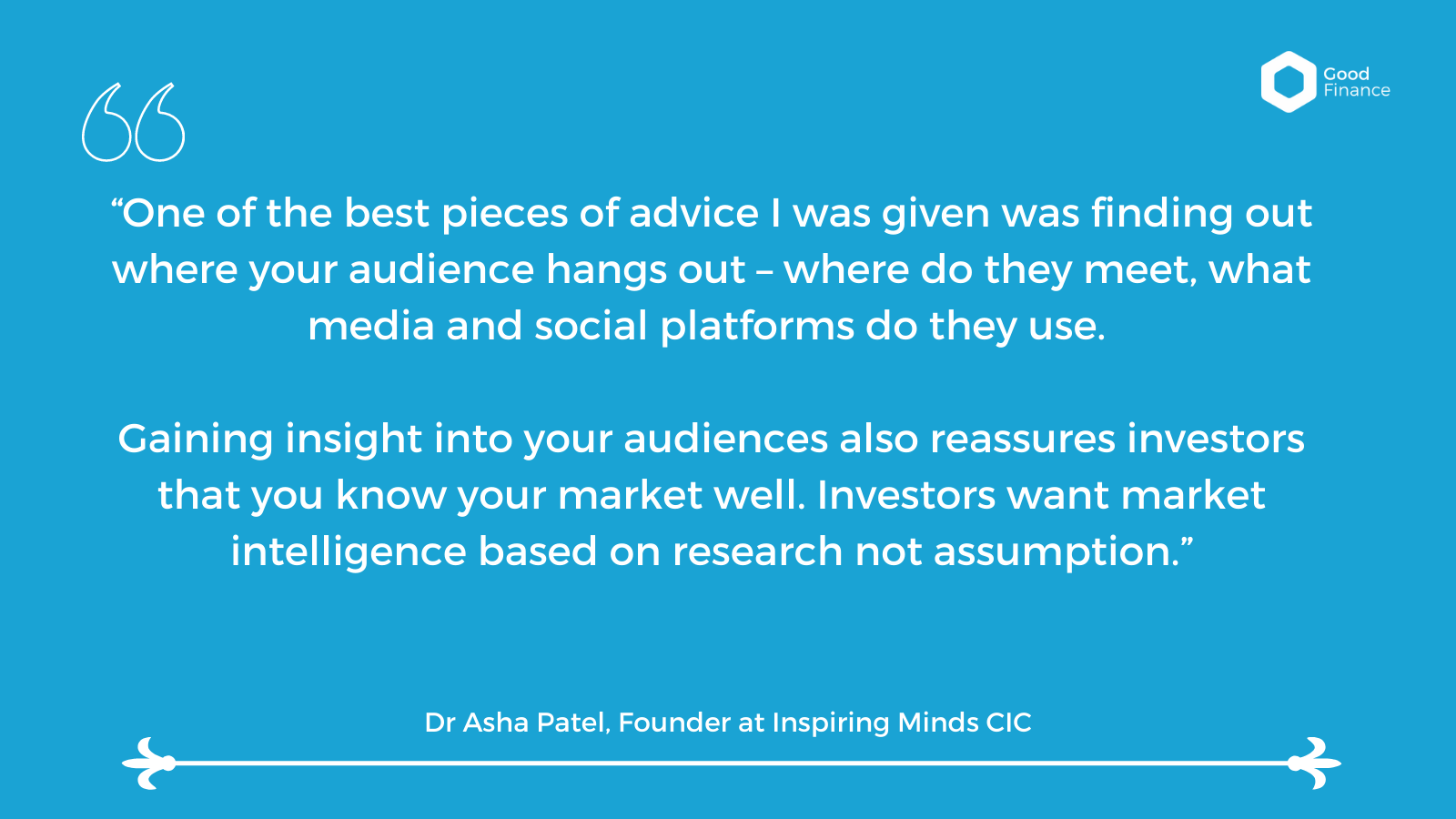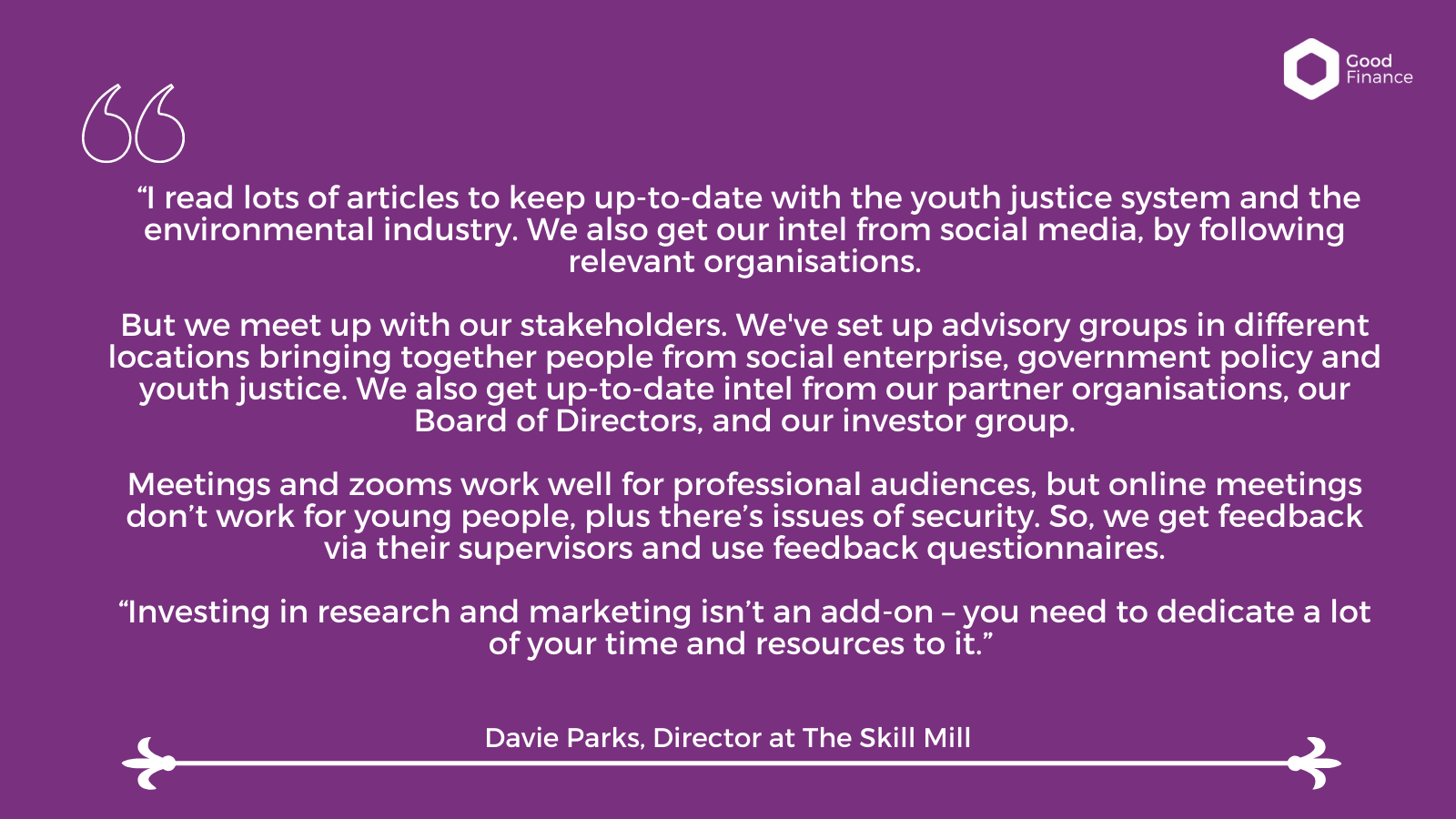In this post, we explore the importance of knowing your users in building sustainable social enterprises and the role this plays in unlocking social investment.
‘Assumption is the mother of all mistakes.’
Business decisions based on assumptions about your target audience can be costly (as the creators of period product Pinky Glove found out).
Embedding audience research and insight into your organisations development helps to:
- Create a strong brand
- Make informed strategic decisions
- Differentiate you from competitors
- Deliver more impact for your beneficiaries
These are all also important factors to unlocking social investment; being able to communicate to investors and stakeholders how and why you know there is a need or demand for your product or service is essential in securing investment.
The role of research in providing insight
Research is a really important tool for being able to demonstrate the demand or market for your work; reach can be distilled into insight.
These insights are key drivers that inform marketing strategies and campaigns, as well as wider business decisions.
When it comes to your users and customers , there different types of insights you can consider, such as:
- Human insight: insight that helps you listen and understand the needs, wants, and motivations of your target customer or user
- Organisational insight: insight gathered from within your organisation from past experiences of working with a particular user or customer that can inform a new or different area of work
- Sector/societal insight: insight gathered from wider sources (e.g. research, reports, current affairs or trends) that may impact or influence the market you operate in.
Exercise one:
Can you think of one insight from each of these above categories you already have?
1. Who are your users and customers?
Most social enterprises have many audiences. For example: customers, service users, funders, investors, partners, staff and volunteers.
There will be diversity within these groups. You may need to use audience segmentation or create ‘sub-groups’ or ‘audience personas’ based on different needs, attitudes or circumstances. Whilst there may be some overlap, don’t assume each audience is a homogenous group!
You may find these blog posts helpful when developing your segmentations:
- 4 steps to defining a social enterprise’s target market
- Marketing your social enterprise
- Selling and marketing your social enterprise
Exercise two:
As a starting point, list the different stakeholders your enterprise works with. Then think about what they have in common, and where they differ.
2. What do you want to know about them?
For different audiences, there will be different things you might want to know.
For example, you might want to know about the social and economic circumstances of your users; how many there are; what they do; where they go; what’s important to them; their housing; caring responsibilities; ethnicity; IT literacy; education; attitudes; barriers to support and perceptions.
Exercise three:
Pick on one of your key stakeholders or audiences, and write down the things you would like to know about them.

3. How will you find out what you need to know?
Once you’ve established what you want to know, you can move on to how you’re going to find this out – the research stage.
There are many different avenues and approaches to finding out what you need to know.
A - Look at the work of similar organisations

B - Tap into existing research and networks

C - Carry out some market research
There are also many different types of market research you can do to find out what you need to know. Download this handy guide to the different common types of market research.
Remember - research is all about your organisation's needs so keep it relevant, manageable and realistic!
Exercise Four: Write down 3 ways you can find out the key things you want to know about your audience.
Audience research can be a real rabbit hole, but keep in mind the need to embed the practice into your everyday work.
Exercise Five: Write down how you can use your existing relationships, sales process, advisory groups, meetings, forums, networking, social media, and events to gain intel.
4. Remember to get consent!
If you are undertaking your own research, participants must give consent to take part in the research and have their data collected. Be aware of the data requirements under the General Data Protection Regulations (GDPR).
If you’re interested to see how we bring this practise to life at Good Finance, we recently re-tested our user personas to ensure we continue to focus on our core audiences and what they need in regard to navigating the world of social investment. Here’s a recent blog detailing what we learned and how we did it!
5. Share, share, and then share some more
The role of research and insight is to enable you to better understand your users, and how to deliver your product or service to meet their needs and wants. Being able to demonstrate that you understand your market, your customer and that there is a demand for your product or service is a really important tool for getting stakeholders and potential investors excited about your work.
If you can demonstrate through research and insight that you are solving a real need or a pressing challenge, make sure you share that with potential investors!
This blog post was written by Hannah Corbett (School for Social Entrepreneurs, Communications Manager and Chartered Marketer) and the Good Finance Team.
Connect via Hannah’s LinkedIn or share your thoughts on Twitter.
